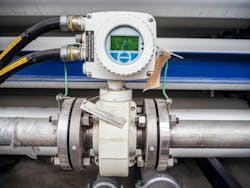Flow, level and pressure measurement devices provide usable data
Aug. 13, 2024
5 min read
Over the past 60 years or so, advances in technology have significantly transformed the construction and functionality of measurement sensors in industry.
If one looks at industrial temperature sensors, thermocouples and resistance temperature detectors (RTDs), for instance, there has been virtually no change in physical attributes and the only real advances have been in the production of clamp-on temperature sensors, which are not intrusive and have no requirement for a thermowell, which in some cases can be an interference in the flow pattern. The head-mounted temperature converters, however, have become smart and can accommodate two different sensors either for verification or for primary-unit-failure occurrences.
In the industrial measurement of level, however, we have seen significant advances particularly in the use of radar and laser technologies.
In the case of the radar, where the frequency of the wave determines the angle or spread of the beam—the first industrial units used beam frequencies from 6 GHz to 10 GHz—we see the latest 80 GHz units, due to the extremely narrow beam, are capable of measuring even down a pipe of small dimensions. Radar is an affordable way in which one can standardize level measurements in any factory as the technology is unaffected by dust, smoke or steam. It is also more efficient and displays higher accuracies than other similar technologes. This is due to the fact that radar is not affected by the changes in medium temperature—air, for instance.
Radar has always been viewed as expensive technology, but in the past decade we have seen vast improvement in pricing vs. other technologies. When one considers the spare-parts requirement for a range of level devices compared to a single compartment in the stores’ racks and easier and simpler implementation for the technicians, then radar ticks all the boxes.
In the case of lasers, their ultra- high-precision accuracy and stability makes them an ideal method for critical applications.
When it comes to flow measurement, a higher rate of research and development (R&D) is spent in this than on any other industrial measurement. We have seen major changes here with the original magnetic flowmeter having advanced from a four-wire dc device to a single-pair, dual-frequency unit that displays higher accuracies at both low and high flowrates.
Clamp-on ultrasonic flowmeters have also advanced with the latest technology and display far higher accuracies than were previously accomplished.
Lasers are now also available for the measurement of velocities, flow, in open-channel applications. This is achieved through the application of non-contact laser Doppler velocimetry (LDV) technology.
In terms of pressure measurement, the technology has advanced from capacitance differential-pressure (DP) transmitter working-principle cells to the very latest solid-state piezoresistive devices which produce amazingly higher accuracies and show almost zero drift in terms of calibration over many years. Digital pressure gauges, with or without wireless transmission, have become the norm, and the increase in accuracy over the older generation of Bourdon tube gauges is remarkable.
When it comes to analytical measurements and the sensing thereof, the determination of excess oxygen in a boiler stack, for instance, has progressed from the zirconia probes, which operate at a temperature of 700 °C and require fairly frequent calibration, to the application of tuned laser diode technology, whereby any gas exiting the boiler stack, such as oxygen, carbon dioxide and many others, each having its own distinctive frequency for identification, can be measured; these devices display parts-per-billion (ppb) accuracies, and currently research is underway to produce mutifrequency devices, capable of detecting and measuring many different gases at the same time.
Laser technology is also employed in the oil-and-gas industry in the form of a ground-based laser remote sensing system, such as light detection and ranging (LiDAR) that has been developed for continuous and real-time monitoring of atmospheric emissions from an oil refinery located hundreds of meters from the instrument. This overcomes the difficulties encountered in monitoring gases emitted from a stack high in the air.
By using lasers mounted at different angles to the stack, 360° circumferential, the system is able to perform 3D scanning and profiling around the emission point. The method can be used in real-time monitoring of industrial aerosol emissions and in the control of industrial processes. This is the fine-tuning element in reducing stack losses in the refinery, resulting in the generation of higher revenue.
Even in the realm of pH measurement, the latest electrodes are basically “smart” and capable of being buffered and then stored for immediate installation when necessary. This is a massive step, in light of all the requirements previously necessary when changing an industrial pH sensor in the field.
Finally, imagine accepting a job as instrument engineer at a factory in the late 1960s to find that the level indicator in the mixed-juice tank was a wooden pole, vertically floating in a pipe and painted with red and white stripes; depending on the number protruding from the top of the tank, the process operator, located within line of sight, would open and close a large handwheel-operated valve accordingly to maintain some degree of level control.
When I installed a flange-mounted level transmitter on the tank, with controller and control valve with I/P converter, everyone said I was crazy and that it would never work. Well, it’s still working there today in the very factory that I spent 13 years automating virtually every department.
About the Author

Charles Palmer
Charles Palmer is a process control specialist and lecturer at Charles Palmer Consulting (CPC). Contact him at [email protected].
Sign up for our eNewsletters
Get the latest news and updates

Leaders relevant to this article:
